Minimalist Travel Photography Gear for Beginners
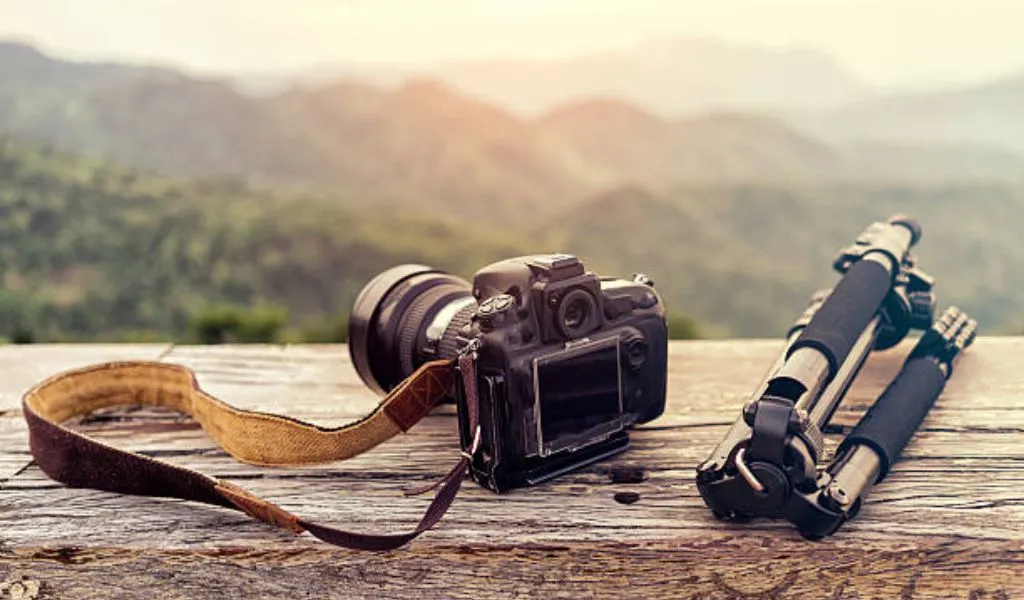
Welcome to the world of minimalist travel photography, where less truly is more. Why Minimalism Matters? Traveling light has many advantages. It is easier to move around, puts less strain on your body, and reduces the stress of handling a lot of gear.
With just a few versatile tools, you can focus on improving your photography skills and capturing the essence of your travels without being weighed down by unnecessary stuff. This article is here to help beginners pick the best minimalist travel photography gear.
We will show you the essentials so you can start taking photos confidently without carrying heavy equipment.
Benefits of Minimalist Gear:
Minimalist gear offers several benefits for those who value simplicity, efficiency, and a lightweight approach to various activities. Here are some key advantages of minimalist gear:
My favourite Travel Photography Gear
Top Compact Cameras for Beginners
1. Fujifilm X100VI
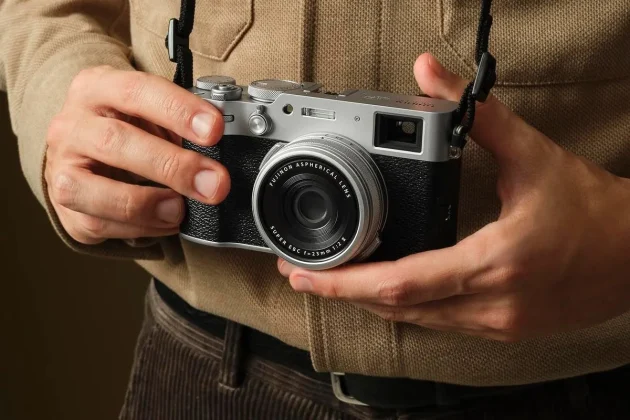
| Specifications | Fujifilm X100VI |
|---|---|
| Megapixels | 40.2MP |
| Lens | Fujinon 23mm F/2.0 II |
| Sensor | X-Trans CMOS 5 HR Sensor |
| Monitor | 3in tilting LCD, 1,620,000 dots |
| Continuous shooting | 11fps (manual shutter), 20fps (electronic shutter) |
| Max video resolution | 6.2K30p, 4K60p, HD240p, 4:2:2 10-bit, F-Log, F-Log2 |
It is considered one of the best cameras available on the market. The Fujifilm X100VI keeps the stunning retro design and manual controls that fans love, while significantly upgrading its internal features. It now has a new 40MP sensor, an updated processor, and in-body image stabilization, which improve both photo and video quality. Early sample images look excellent.
However, this model is the most expensive in the X100 series, making it hard to justify when there are better-equipped cameras available for less money. Despite this, its classic design and improved features make the X100VI a great option for photographers who value the shooting experience and vintage style over just specs and cost.
Pros and Cons of Fujifilm X100VI
Pros
Cons
2. Panasonic Lumix LX100 II
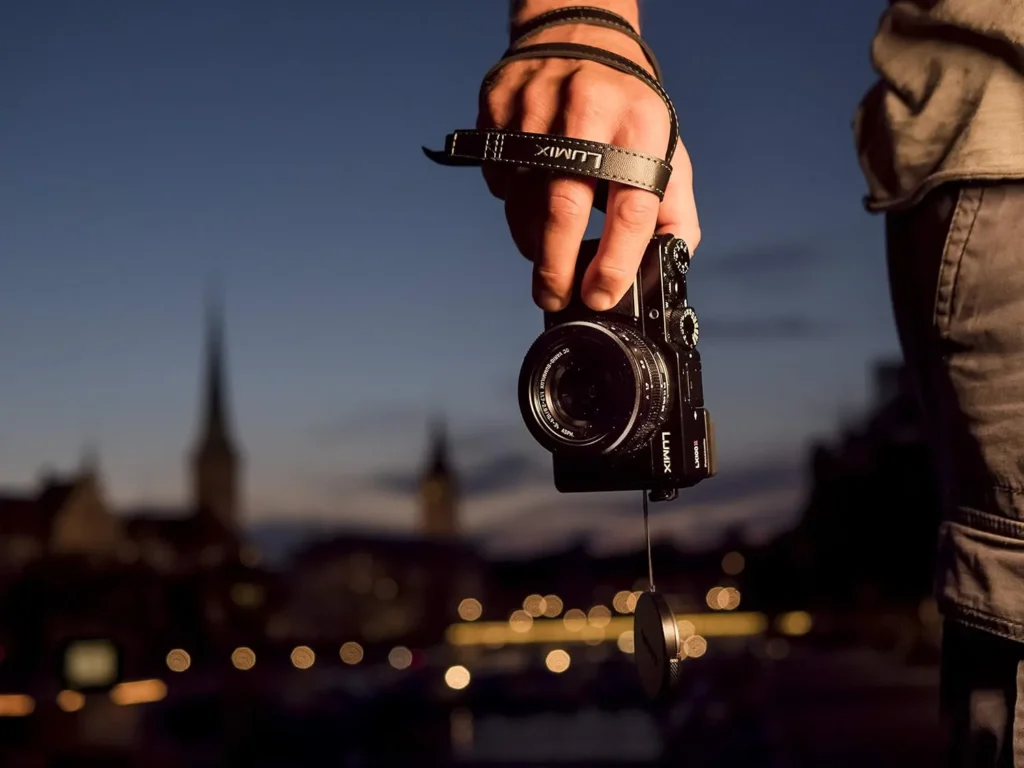
| Specifications | Panasonic Lumix LX100 II |
|---|---|
| Sensor size | Micro Four Thirds |
| Megapixels | 17MP |
| Lens | 24-75mm, f/1.7-2.8 |
| Max video resolution | 4K |
| Continuous shooting | 11fps |
| LCD | 3in fixed, 1,24 million dots |
The Panasonic LX100 II is a small, pocket-sized camera with a powerful Micro Four Thirds sensor, almost as large as those in bigger DSLR cameras. This means you get excellent photo and video quality in a compact package.
It is an upgrade from the original LX100, featuring a new 17-megapixel sensor that lets you change the aspect ratio without losing quality.
It also has handy features like an external shutter speed dial, a lens aperture ring, and an aspect ratio switch, making it fun and easy to use. The combination of its small size and great performance makes it a standout choice in the compact camera market.
Pros and Cons of Panasonic Lumix LX100 II
Pros
Cons
3. OM System Tough TG-7
It is one of the best waterproof cameras.

| Specifications | OM System Tough TG-7 |
|---|---|
| Lens | 25-100mm (equiv.) f/2.0-4.9 |
| Megapixels | 12MP |
| Sensor | 1/2.33in |
| LCD | 3in, 1,040k dots |
| Max video resolution | 4K |
The OM System TG-7 is the new version of the well-loved Olympus TG-6 waterproof compact camera. It keeps the great features of the TG-6, like a special microscope mode for amazing close-up shots and a Field Sensor System that records GPS and temperature data with your photos.
New features in the TG-7 include:
- 4K video at 30 frames per second
- Full HD 120 frames per second slow-motion video
- A versatile 25-100mm optical zoom lens
The camera also has an improved handgrip for a more secure hold and an internal zoom lens mechanism that protects against bumps. Overall, the TG-7 is considered the best waterproof camera by the reviewer, offering a perfect mix of easy-to-use functions and advanced features in a tough, stylish design.
Pros and Cons of OM System Tough TG-7
Pros
Cons
Mirrorless Cameras for Photography
1. Canon EOS R7
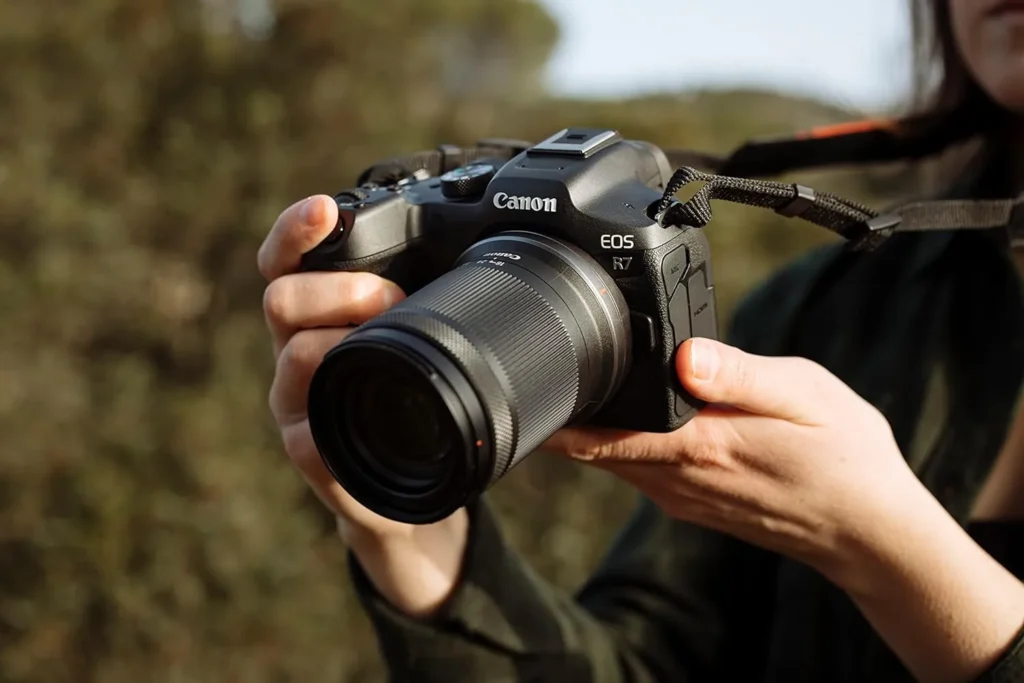
| Specifications | Canon EOS R7 |
|---|---|
| Lens mount | Canon RF • RF-S |
| Screen | Articulating touchscreen, 1.62m dots |
| Megapixels | 32.5MP |
| Viewfinder | 2.36m dots, 120fps |
| User level | Intermediate |
Canon EOS R7 is considered as one of the best mirrorless cameras. This camera replaces three popular Canon DSLR models (EOS 90D, 7D, 80D). It’s not just for wildlife and sports photography but is a versatile, high-performance camera. It still works great for wildlife and sports with a shooting speed of 30 frames per second and a 1.6x crop factor that increases lens reach.
It has a top-notch autofocus system, perfect for capturing fast action. Even though it has an APS-C sensor, it offers high resolution with a 32.5MP sensor. The camera can shoot excellent 4K video and includes headphone and microphone jacks.
It also features professional options like dual card slots and up to 8 stops of in-body image stabilization. This is a highly capable all-around camera, despite having an APS-C sensor.
Pros and Cons of Canon EOS R7
Pros
Cons
2. Nikon Z9

| Specifications | Nikon Z9 |
|---|---|
| Megapixels | 45.7MP |
| Autofocus | 493-point hybrid phase/contrast detect |
| Screen type | 3-inch bi-directional tilting touchscreen, 1.04m dots |
| Movies | 8K |
| User level | Expert |
The Nikon Z9 mirrorless pro camera was worth the wait, emerging as the best all-around mirrorless camera on the market for professional photographers. . It excels in video capabilities with its groundbreaking 8K 60p recording, a first for this type of camera. The Z9 also boasts incredibly fast 120 frames per second continuous shooting and a maximum shutter speed of 1/32,000, all without a mechanical shutter.
Its deep learning-powered autofocus is exceptional for various subjects, though it still trails slightly behind Canon and Sony. The camera features excellent stabilization and a rugged build, although its controls can be somewhat confusing.
While the Z9 is more affordable than flagship models from Sony and Canon, the Nikon Z8 offers the same impressive specs in a smaller body at an even lower price. Overall, the Z9 delivers outstanding performance and features, compensating for Nikon’s late entry into the professional mirrorless camera market.
Pros and Cons of Nikon Z9
Pros
Cons
Lenses for Travel Photography
1. Canon RF 24-240mm f/4-6.3 IS USM
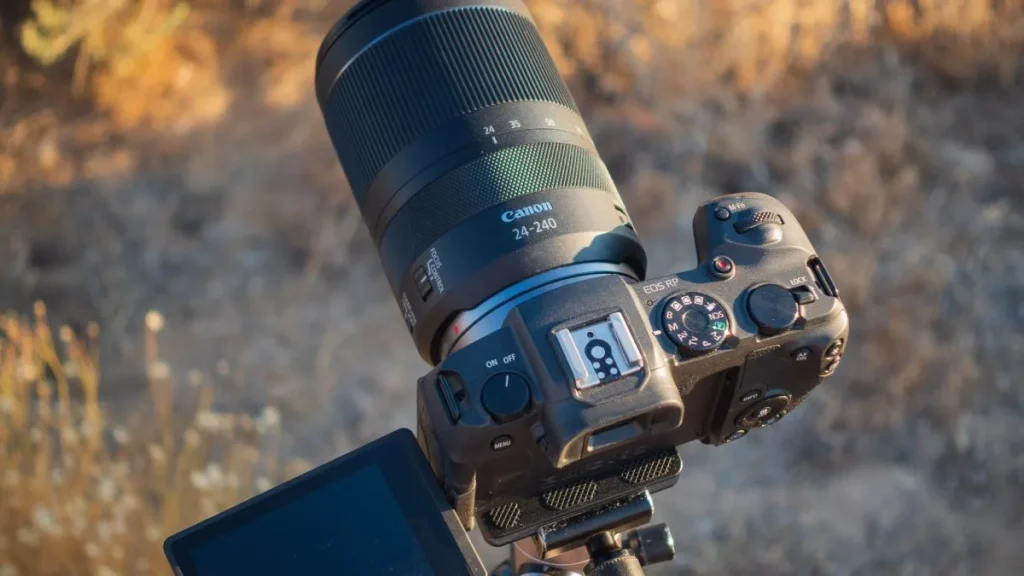
| Specifications | Canon RF 24-240mm f/4-6.3 IS USM |
|---|---|
| Autofocus | Ultrasonic (nano) |
| Mount | Canon RF |
| Minimum focusing distance | 0.5m |
| Dimensions | 80x123mm |
| Maximum magnification ratio | 0.26x |
| Filter size | 72mm |
Canon has launched a versatile superzoom lens for its EOS R mirrorless camera system. The lens offers an extensive zoom range from wide-angle to telephoto, making it a flexible and travel-friendly option. Despite its zoom capabilities, the lens maintains a compact and weather-sealed design.
It features advanced autofocus, image stabilization, and employs optical and digital correction techniques to mitigate optical aberrations at wide-angle. The new superzoom lens provides EOS R users with a capable and high-performance zoom option without compromising on portability.
Pros and Cons of Canon RF 24-240mm USM
Pros
Cons
2. Nikon Z 24-200mm f/4-6.3 VR for Nikon Mirrorless Camera

This lens offers an impressive zoom range and exceptional image quality in a compact, lightweight, and weather-sealed package. It incorporates advanced optics and coatings to minimize aberrations and flare, while the smooth autofocus system ensures seamless focus transitions for video recording.
Designed for Nikon’s full-frame Z-series cameras, it is also a versatile travel option for the Z 50 crop-sensor model, extending its effective zoom range.
| Specifications | Nikon Z 24-200mm f/4-6.3 VR |
|---|---|
| Autofocus | Stepping motor |
| Mount | Nikon Z FX |
| Minimum focusing distance | 0.5-0.7m |
| Dimensions | 77x114mm |
| Maximum magnification ratio | 0.28x |
| Filter size | 67mm |
Pros and Cons of Nikon Z 24-200mm f/4-6.3 VR
Pros
Cons
3. Fujifilm 18-135mm f/3.5-5.6 WR LM R OIS

The Fujifilm XF lens offers a compelling combination of features for APS-C mirrorless shooters. Its weather-resistant construction with 20 sealing points ensures protection against the elements, while the fast linear motor autofocus and 5-stop optical image stabilization benefit both stills and video.
The premium optical design, incorporating aspherical and low dispersion elements, delivers excellent overall image quality, though some corner softness is evident at the extremes of the 7.5x zoom range.
Still, the lens’s robust build, capable autofocus, effective stabilization, and sharp optics are packed into a reasonably compact form factor, making it a versatile and well-rounded option for X-mount shooters.
| Specifications | Fujifilm 18-135mm f/3.5-5.6 |
|---|---|
| Autofocus | Stepping motor |
| Optical stabilizer | 5-stop |
| Minimum focusing distance | 0.45m |
| Dimensions | 76x98mm |
| Maximum magnification ratio | 0.27x |
| Filter size | 67mm |
Pros and Cons of Fujifilm 18-135mm f/3.5-5.6
Pros
Cons
All-in-one lenses for travel Photography
All-in-one lenses, also known as superzoom or bridge lenses, are incredibly convenient for travel photography due to their versatility and portability. They offer an impressive focal length range, typically spanning from wide-angle to super-telephoto, allowing you to capture a diverse range of subjects without the need to change lenses.
This not only reduces the weight of your camera gear but also minimizes the risk of getting dust or moisture inside your camera. With their flexibility and image stabilization technology, all-in-one lenses make an excellent choice for travelers who prioritize convenience and ease of use while still capturing decent image quality.
Lightweight Tripods
1. Peak Design Travel Tripod

The Peak Design Travel Tripod is an exceptional travel tripod that combines portability and functionality. Despite being Peak Design’s first tripod, it excels in design and performance. Its innovative compact folding system allows it to pack down to just 39cm in length, eliminating wasted space for easy carrying.
The tripod features a simple yet capable low-profile ball head, an integrated phone holder, and a remarkably sturdy build quality. While height extension may be slightly less than some rivals, the Peak Design Travel Tripod delivers an excellent balance of compact size, versatility, and rigidity, making it one of the best options for traveling photographers.
Pros
Cons
2. Manfrotto Befree 3-Way Live

The Manfrotto Befree 3-Way Live Advanced is a lightweight travel tripod ideal for photographers, featuring a three-way head. While ball heads are popular, I prefer a 3-way head for architectural and close-up photography due to the precise adjustments it allows. This particular head has a hydraulic damping system for smooth camera movements, making it suitable for video as well.
The tripod offers a good balance of capacity, weight, and price. It can support up to 6kg of equipment and weighs only 2kg. Although there are lighter and stronger tripods available, they are usually more expensive.
Pros
Cons
3. Benro MeFoto RoadTrip Pro

I first thought the main feature of the ‘6-in-1’ Benro MeFoto RoadTrip Pro would be its versatility. While that’s true, I also found it to be a great travel tripod. Even at full height, it’s very stable for its size, and it has some extra features that are useful for both cameras and phones.
The tripod’s versatility means it can also be used as a monopod and a mini table tripod, which are handy extras. It’s nice that the hex key, small tripod legs, and smartphone clamp are stored with the tripod, so you’re less likely to lose them. However, these extra parts do make the tripod a bit heavier.
Pros
Cons
Lightweight Camera Bags
Essential Accessories for Minimalist Photographers
Memory Cards
1. Kingston Canvas React Plus 256GB SD Card

When shooting in the mountains or underwater, I prefer the 256 GB Kingston Canvas React Plus SD card. This high-performance UHS-II SD card is available in 32 GB, 64 GB, 128 GB, and 256 GB capacities. It boasts a write speed of 260 MB/s and a read speed of 300 MB/s, making it ideal for professional photographers and content creators.
It handles the 12 fps shutter speed of my Canon R5 effortlessly. In my benchmark tests, it achieved the fastest write speeds. Kingston is a trusted brand, crucial for shooting in harsh conditions. The V90 rating allows for 4K recording, though it can’t handle 8K RAW, for which I use CF cards.
2. ProGrade 512GB SDXC UHS-II V90 300R

If you’re in need of a professional, high-performance SD card with the largest capacity, consider the ProGrade 512 GB SDXC 300R. This top-tier SD card from ProGrade boasts impressive specs, including 300 MB/s read and 250 MB/s write speeds, and offers a substantial 512 GB capacity.
No other notable manufacturers currently match this level of speed performance in a 512 GB card. Additionally, data transfer speeds for quick edits and previews using ProGrade’s USB-C mobile reader are consistently fast.
3. SanDisk Extreme Pro V30 – Best Budget SD Card

The SanDisk Extreme Pro V30 is a top choice for hobby photographers using cameras that don’t require UHS-II cards. It offers shot speeds up to 140MB/s and read speeds of 200MB/s, making it ideal for models like the Sony A6600, Sony ZV-E10, and Canon 5D Mark IV.
RELATED:
Available in capacities from 32GB to 512GB, it provides ample storage at a lower cost compared to high-performance UHS-II cards. SanDisk is a trusted brand in photography, known for its reliable products. This card is praised for its speed, reliability, and affordability, making it an excellent option for photographers.
Filters for Amazing Photography
Additional Tips for Minimalist Travel Photography
Minimalist travel photography is all about capturing the essence of a place with simplicity and elegance. Here are some additional tips to enhance your minimalist travel photography:
1. Pack Light but Smart
- Opt for a lightweight, versatile camera with a prime lens, such as a 35mm or 50mm, which encourages creativity and simplicity.
- Bring only essential accessories like extra batteries, memory cards, and a compact tripod.
2. Plan Ahead
- Study your destination beforehand to identify potential minimalist photo spots.
- Visit popular sites early in the morning or late in the afternoon to avoid crowds and capture soft, natural light.
3. Focus on Composition
- Use the rule of thirds to create balanced and interesting compositions.
- Emphasize negative space to highlight your subject and create a sense of calm.
4. Use Natural Light
- Take advantage of the golden hour for soft, warm lighting.
- Experiment with shadows to add depth and contrast to your photos.
5. Find Unique Perspectives
- Shoot from unusual angles—low, high, or from the side—to give a fresh perspective.
- Utilize reflections in water, windows, or other surfaces to add a minimalist touch.
6. Simplify Your Scene
- Avoid clutter in your frame; focus on a single subject or a simple scene.
- Look for natural patterns and leading lines to guide the viewer’s eye through the photo.
7. Edit Thoughtfully
- Use minimal editing to enhance the natural beauty of your shots.
- Maintain a consistent editing style to create a cohesive look across your photos.
8. Capture Local Culture
- Focus on small details that represent the local culture, such as architectural elements, street art, or traditional clothing.
- Capture candid moments of locals going about their daily lives, respecting their privacy and personal space.
9. Practice Patience
- Wait for the Moment: Sometimes, the best shots come from waiting for the right moment, whether it’s the perfect light or an interesting subject entering the frame.
10. Experiment with Black and White
- Contrast: Black and white photography can emphasize contrast and texture, stripping down the scene to its most essential elements.
- Mood: It can also add a timeless, classic feel to your travel photos.
By integrating these tips, you can enhance your minimalist travel photography, capturing the essence of your travels with simplicity and elegance.
Conclusion
In summary, minimalist travel photography is all about capturing your travels with simplicity and elegance. By carrying less gear, you can move more easily, avoid physical strain, and reduce stress. This lets you focus on improving your photography skills and fully enjoying the places you visit.
The article highlighted the importance of choosing the right gear and adopting a minimalist mindset. Compact cameras like the Fujifilm X100VI or Panasonic Lumix LX100 II offer high quality in a portable size. Essential accessories include lightweight tripods, versatile lenses, and sturdy camera bags to keep you well-equipped without being burdened.
Minimalist gear is not just about carrying less; it also means being versatile, cost-effective, and mindful in your photography. By concentrating on good composition, using natural light, and finding unique perspectives, you can take beautiful photos that capture the essence of your surroundings. Smart planning and packing, along with thoughtful editing, help you get the best results while keeping your photos natural.
Frequently Asked Questions (FAQs)
How do photographers travel with their gear?
Many photographers and film crews pack their gear in the hold, and as long as you pack things well and in a sturdy case, your gear should be fine in the hold. Packing your gear securely into a case like the Pelican will keep things safe and free from impact damage.
What are 5 things photographers do?
Photographers typically do the following:
Market or advertise services to attract clients.
Analyze and plan the composition of photographs.
Use various photographic techniques and lighting equipment.
Capture subjects in professional-quality photographs.
Enhance the subject’s appearance with natural or artificial light.
How to pack a DSLR for travel?
Wrap up each component in something padded.
Protecting any lenses or your camera body against knocks is key when you’re traveling. Some people use dedicated padded inserts, and some use cloth wraps made specifically for camera gear. Both of those options are the preferred way, to preserve your gear the best.
Is DSLR allowed in airport?
Yes, you will be able to fly with a DSLR camera in both your hand and checked luggage. However, if you are carrying it in your carry-on luggage, which we recommend, you should check with the airline that your camera will be able to fit in the overhead bin and not need to be gate-checked.
Can I put my camera in a normal bag?
It is not recommended because you can damage it. If you’re looking to fit your DSLR into a bag that looks like a regular bag, you might want to consider a sling bag. Yes, but if it hits a hard object your dslr might get damaged and cost you quite a bit for repairs, especially the lower-end models.










3 Comments